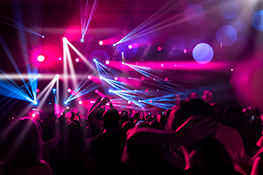Next-Level Stage Lighting: Exploring Laser and Holographic Projection Mapping
Introduction: Beyond the Spotlight
The world of stage lighting is constantly evolving, pushing creative boundaries and enhancing the immersive experience for audiences. While traditional lighting techniques remain essential, innovative technologies like lasers and holographic projection mapping are revolutionizing the industry, offering unparalleled visual spectacle and storytelling potential. This article delves into these cutting-edge techniques, exploring their applications, advantages, and the future they promise for live performances.
Lasers: Precision and Power on Stage
Lasers have long been associated with dazzling light shows, but their application in stage lighting extends far beyond simple effects. High-powered laser systems allow for the creation of incredibly precise beams, capable of cutting through the air with sharp lines and vibrant colors. This level of control opens up new possibilities for artistic expression, allowing lighting designers to sculpt light into intricate patterns and dynamic shapes that seamlessly integrate with the performance. From subtle atmospheric washes to bold, eye-catching effects, lasers offer a versatility that is transforming the landscape of stage design.
Furthermore, advancements in laser technology have significantly improved safety protocols. Modern laser systems incorporate sophisticated safety mechanisms, ensuring responsible and controlled operation even in the most demanding environments. This increased safety, coupled with the ever-increasing power and versatility of lasers, allows for more ambitious and spectacular designs.
Holographic Projection Mapping: Creating Illusions
Holographic projection mapping takes stage lighting to a new dimension, literally. By projecting images onto translucent surfaces or even seemingly empty space, this technology creates the illusion of three-dimensional objects and environments, effectively blurring the lines between the physical and the virtual. This is achieved through advanced techniques that manipulate light and perspective, creating immersive and awe-inspiring visuals that seamlessly integrate with the performance.
Imagine a performer seemingly interacting with a holographic dragon, or a stage transforming into a fantastical landscape with the flick of a switch. Holographic projection mapping offers a level of visual storytelling previously only achievable through expensive and complex special effects. The potential applications in theatre, concerts, and other live events are limitless, offering a uniquely engaging and unforgettable experience for audiences.
Combining Lasers and Holographic Projection Mapping
The true power of these technologies lies in their synergy. Combining lasers with holographic projection mapping opens up a world of innovative creative possibilities. Lasers can be used to enhance holographic projections, adding depth, texture, and dynamism to the visuals. For instance, lasers could be used to outline holographic characters or create atmospheric effects that complement the projected imagery. This combined approach allows for a richer, more nuanced, and deeply immersive experience that captivates the audience on multiple levels.
Future Trends and Innovations
Both laser and holographic projection mapping technologies are constantly evolving. Advancements in laser technology are leading to brighter, more efficient, and more versatile systems. Similarly, advancements in projection mapping techniques are improving the resolution, brightness, and overall quality of holographic projections. We can expect to see even more sophisticated and impressive applications of these technologies in the years to come, further blurring the lines between reality and illusion on stage.
Conclusion: A New Era of Stagecraft
Laser and holographic projection mapping represent a significant leap forward in stage lighting technology. These innovative techniques offer unparalleled creative possibilities, transforming the way we design, experience, and interact with live performances. As the technology continues to evolve, we can expect to witness ever-more breathtaking and immersive stage productions, pushing the boundaries of what’s possible and redefining the very nature of live entertainment.


 Auditorium Construction Services
Auditorium Construction Services 